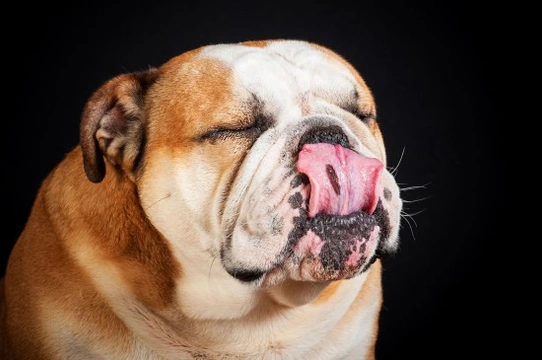Pets
Pets for studWanted petsBreedersAccessories & services
Knowledge hub
Support
Support & safety portal
Reverse sneezing in dogs - What is it, and what does it mean?
Reverse sneezing is correctly known as paroxysmal respiration or the pharyngeal gag reflex, and is very different to normal sneezing, and quite distinctive to witness! Reverse sneezing is significantly louder than a normal sneeze, and can be quite alarming to see, as it can be confused with choking or breathing difficulties. Generally, a bout of reverse sneezing will resolve itself quickly and without a problem, and many dog owners get used to hearing the sound it produces, and do not pay it much mind after a while.
However, if your dog is apt to reverse sneeze, it is well worth finding out what causes reverse sneezing, what it means for dogs, and whether or not it is a problem. Read on to learn more!
What causes reverse sneezing in dogs?
Exactly what the root cause of reverse sneezing in the dog is is not definitively known, and it is entirely possible that the reasons behind it can vary from case to case. It is most widely believed to be caused by an irritation in some area of the throat, nose or sinuses, which leads the dog to snort and reverse sneeze in order to try to clear out any mucous present and open the airways.
When a reverse sneeze occurs, it causes a spasm of the soft palate and throat, and can often be confused with the symptoms of a collapsed trachea.
Reverse sneezing may happen on its own due to no obvious trigger or outside cause, but it can also be triggered by allergens present in the environment, a collar that is too tight, or simple excitement causing the way that your dog breathes to alter.
What types of dogs are prone to reverse sneezing?
Reverse sneezing is not a breed-specific issue, and so it can potentially afflict dogs of any breed, type or size. However, it is most commonly observed in smaller dogs, particularly lap dogs, and those with brachycephalic faces (such as the Pug, the Boxer and the Bulldog).
Potential causes for this include the smaller windpipe and throat of small dogs, and elongated soft palates.
Identifying a reverse sneeze
It is important to be able to differentiate between a normal sneeze and a reverse sneeze, and once you have witnessed reverse sneezing once, you will usually be able to spot it again in the future!
Reverse sneezing is generally much louder and more protracted than normal sneezing, and produces more of a snorting sound than a delicate sneezing sound! During normal sneezing, air is expelled from the nose at high speed, but as the name suggests, reverse sneezing involves air being sucked in through the nose at speed, during which time the dog’s head and neck may be extended, or held at an awkward angle.
During a bout of reverse sneezing, the dog’s posture will usually be stiff and tense, and their eyes will generally be wide open or even bulging. The sound, posture and tense appearance of a dog undergoing a reverse sneezing bout all combine to look rather alarming to the uninitiated, but fortunately, attacks do not usually last for longer than a few seconds at a time.
Dealing with reverse sneezing in the dog
Generally speaking, reverse sneezing is simply one of those odd canine anomalies that do not pose a real problem for the dog, and come to be a part of its normal life. If you only witness reverse sneezing occasionally, there is probably nothing much you can, or should, do about it, but if your dog’s reverse sneezing fits are frequent or protracted, you may wish to get your vet to investigate further.
As reverse sneezing is something that comes and goes, it can be difficult to schedule a veterinary appointment to permit your vet to witness your dog undergoing a bout, but you can of course try to video your dog during an attack, and show this to your vet. It is wise to have your vet examine your dog’s anatomy and build if they are prone to reverse sneezing, to see if there is an obvious underlying cause or anything that can be done about it.
When your dog is undergoing a reverse sneezing attack, the most commonly offered professional advice is to simply leave them to it, and let the bout run its course. Offering your dog water afterwards may be welcomed by the dog, but generally, they will return to normal and be completely unbothered by the attack very shortly after it has finished. Gently massaging the throat of the dog, if they will allow this, can help to stop a reverse sneezing attack, as this stimulates the response to swallow.
Do not worry too much about reverse sneezing in the dog, provided that your vet is aware of it and has performed an examination on your pet; but do try to monitor the frequency and length of any attacks, so that you will become aware of any changes.



